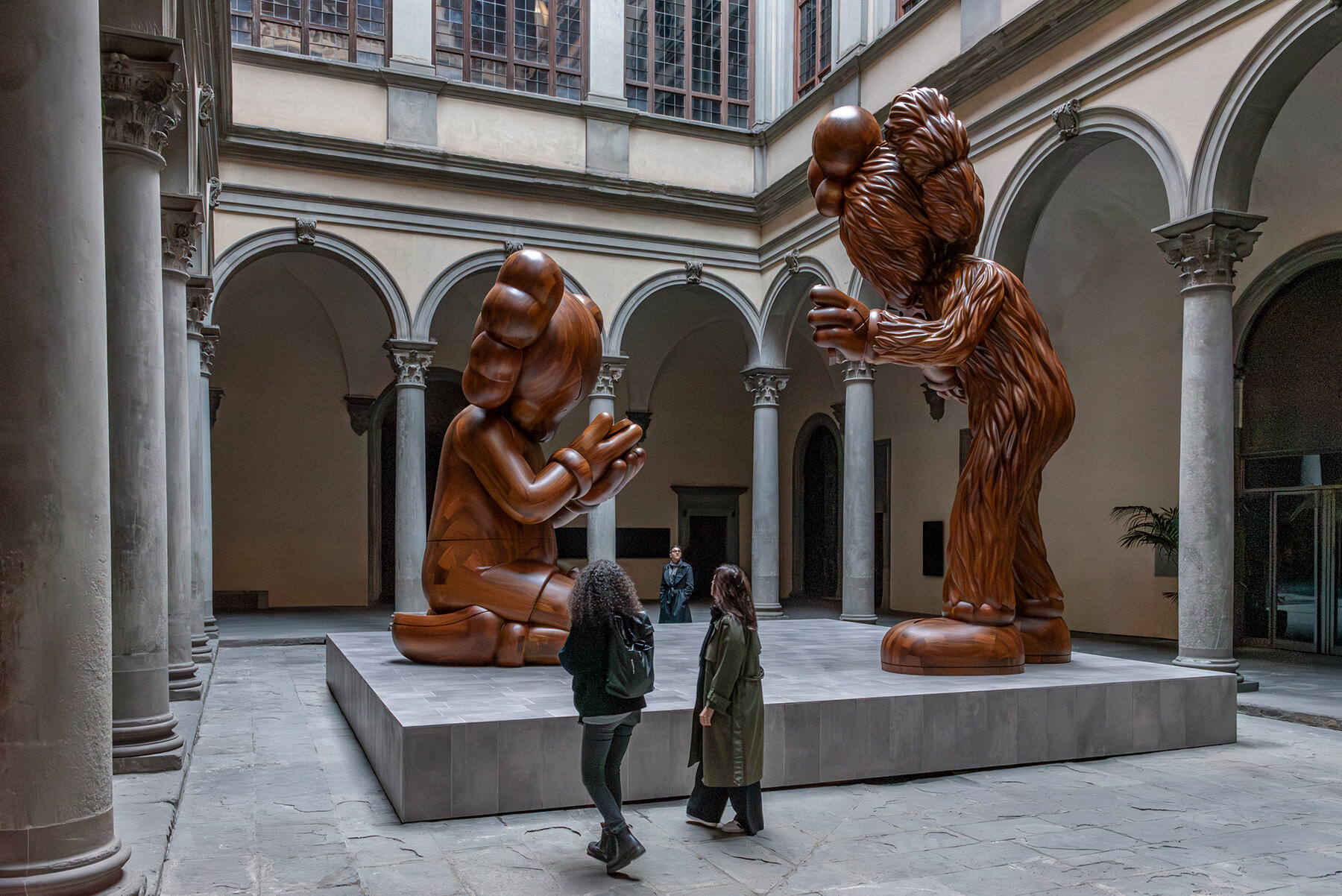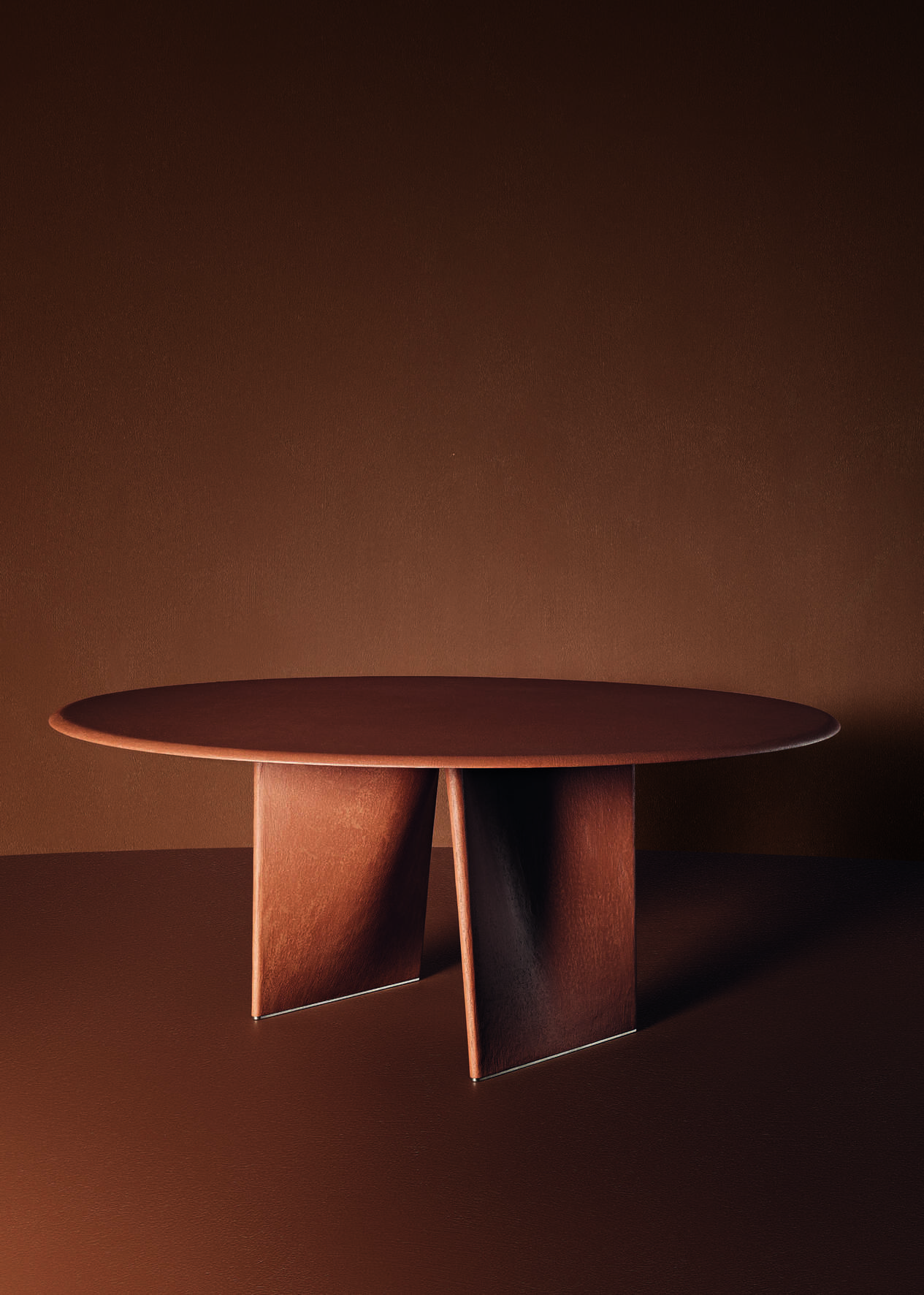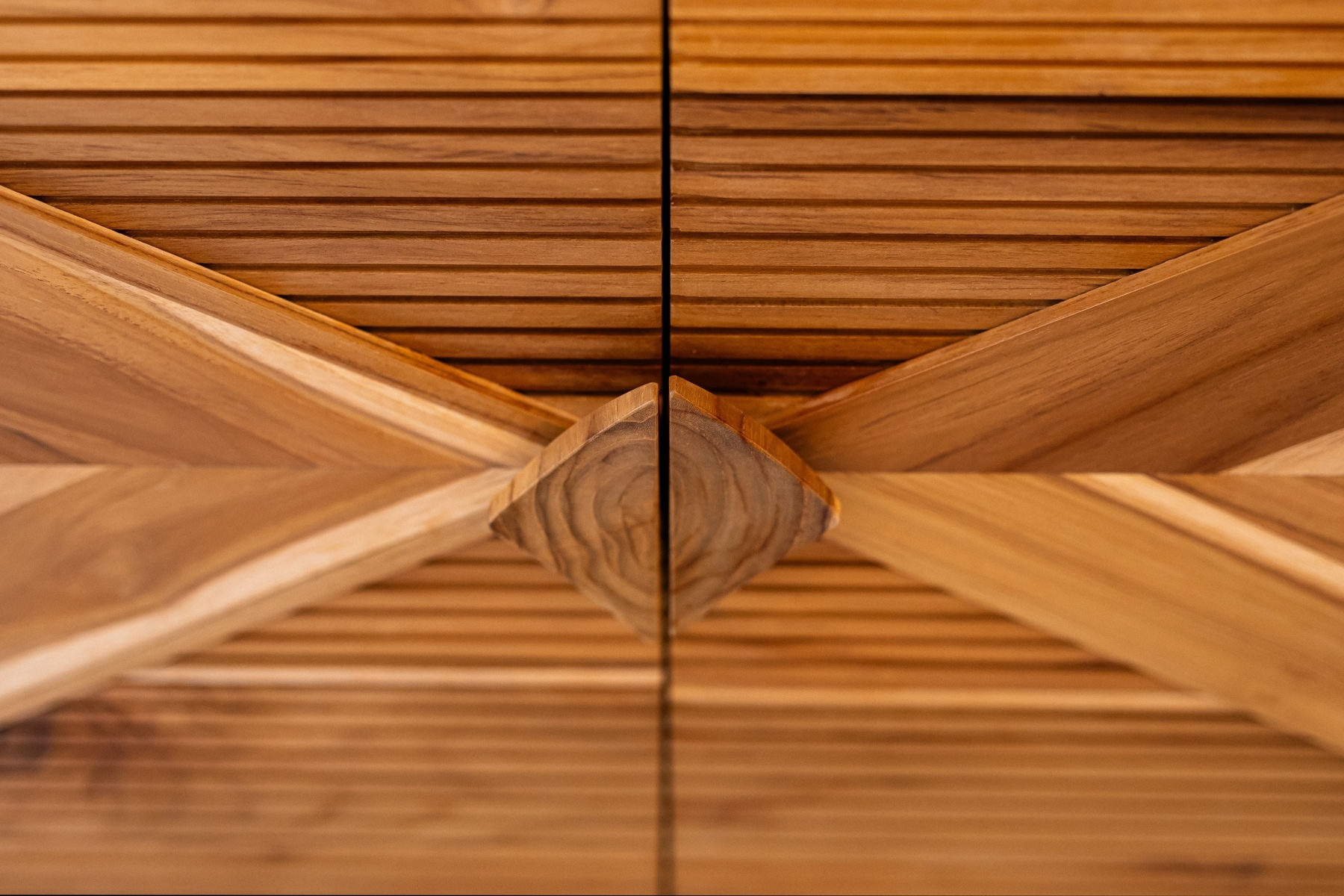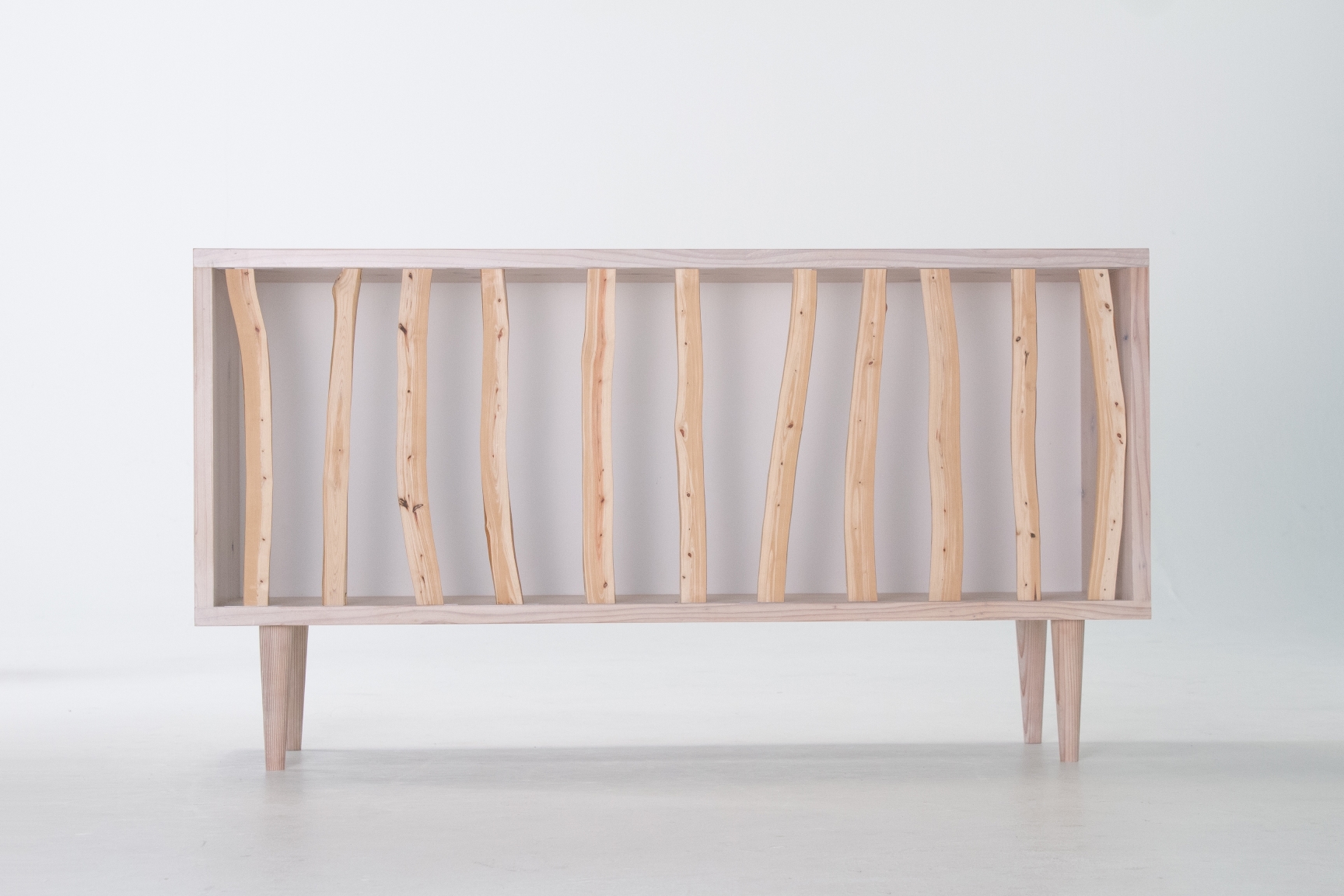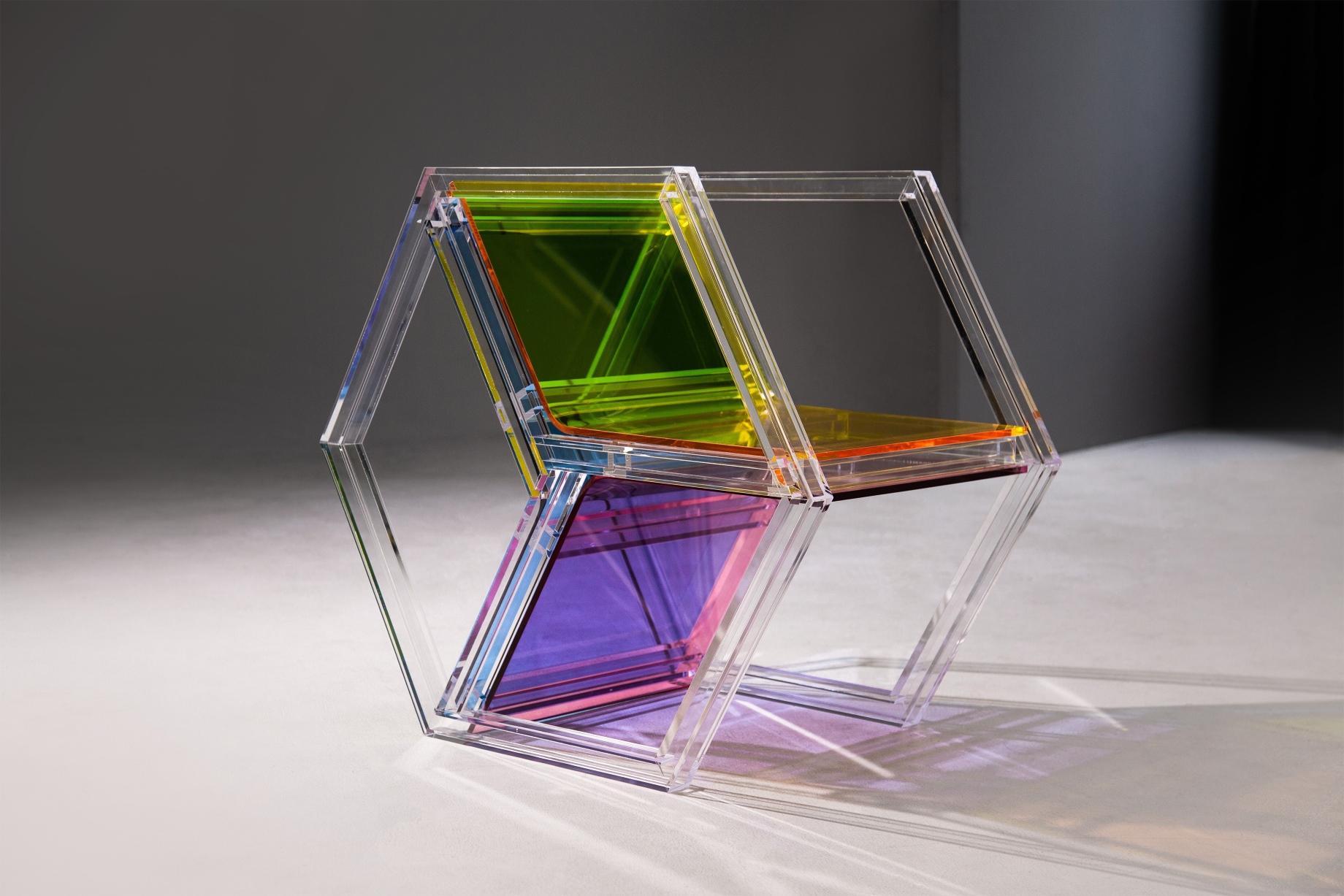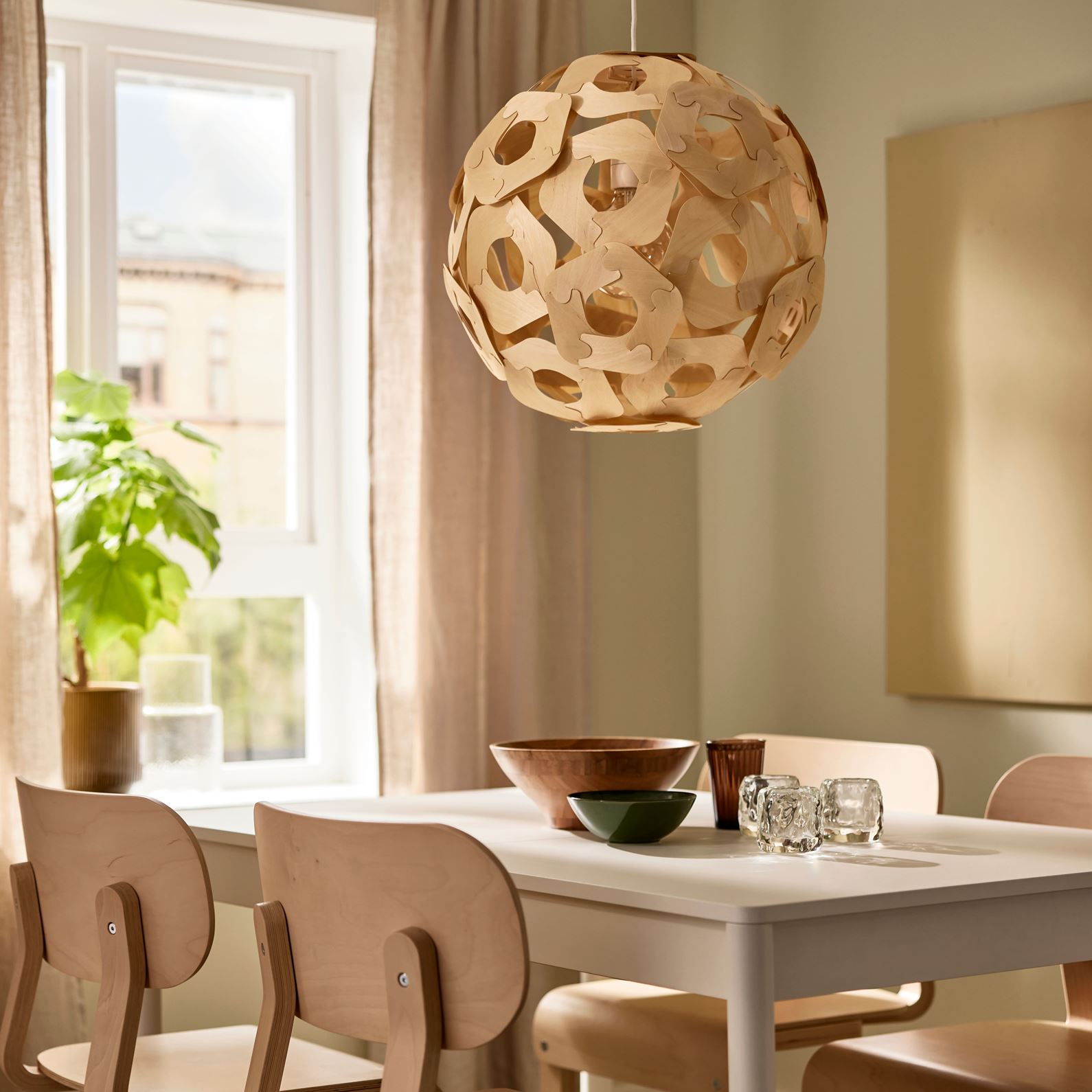Maricruz Miranda Nautical Interiors’ Almendros console captures the ongoing cultural shift in Costa Rica. The small Central American country has become an increasingly popular destination for expats, who have settled in traditionally rural areas. With expats came a variety of global influences to Costa Rica’s rich heritage. The clients themselves, Catherine Bainbridge and Ernest Webb, know a bit about mixed influence, considering they also come from diverse backgrounds: Native American and European. The table reflects a merger between local traditions and modern influences.
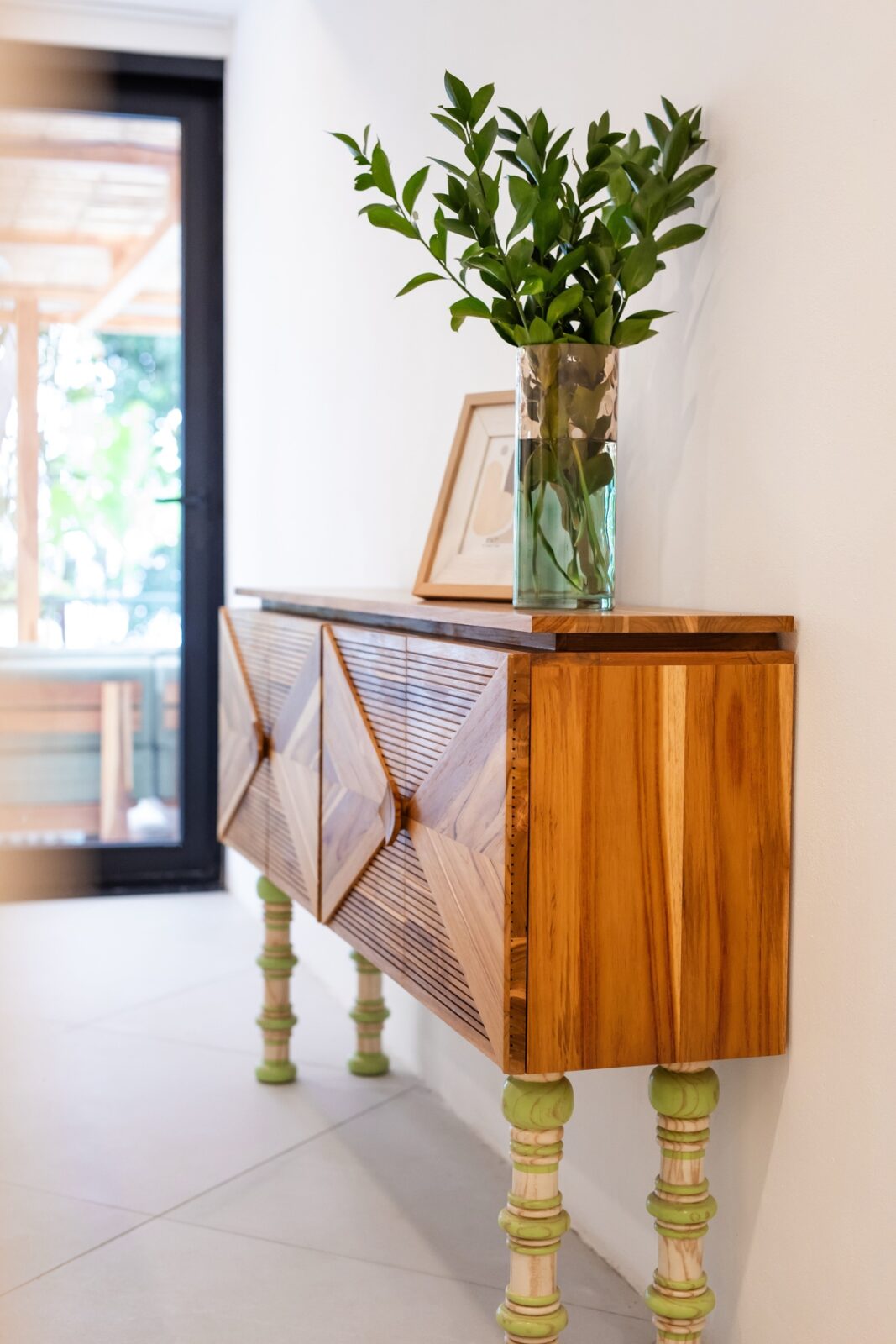
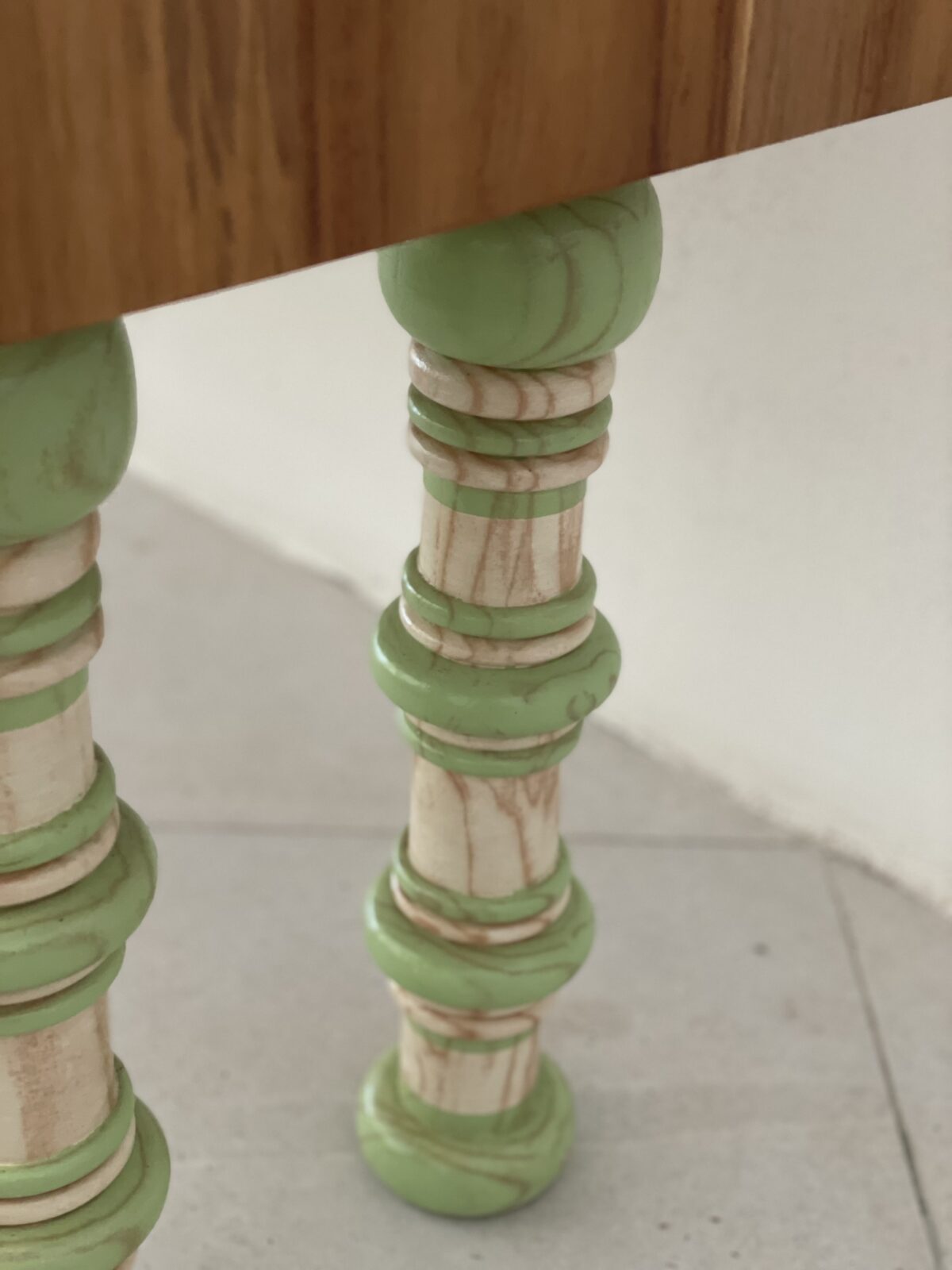
Traditional Sarchi craft meets modern influences
The designers gave homage to Costa Rocan’s rich craftsmanship and woodworking tradition called Sarchi, best seen in the curved details of the object’s legs. These influences have been enriched with contemporary techniques. By adding vivid colors, the designers gave new life to traditional forms, while the visibility of the natural wood grain maintains the material’s organic essence. These revived traditional curved legs carry a cabinet, boasting a very detailed modern, sleek design, with a nod to the constantly changing Costa Rican cultural scene.
The design concept that combines past and present gives additional meaning to the object, therefore surpassing its original function. Almendros consoles come in two types, with a visible difference in the legs. Both legs feature white and green hues, but are shaped differently, with one design showcasing more curves than the other. Almendros console has won the SIT Furniture Design Award in the Console Table category, and an honorable mention in the Furniture Design category.
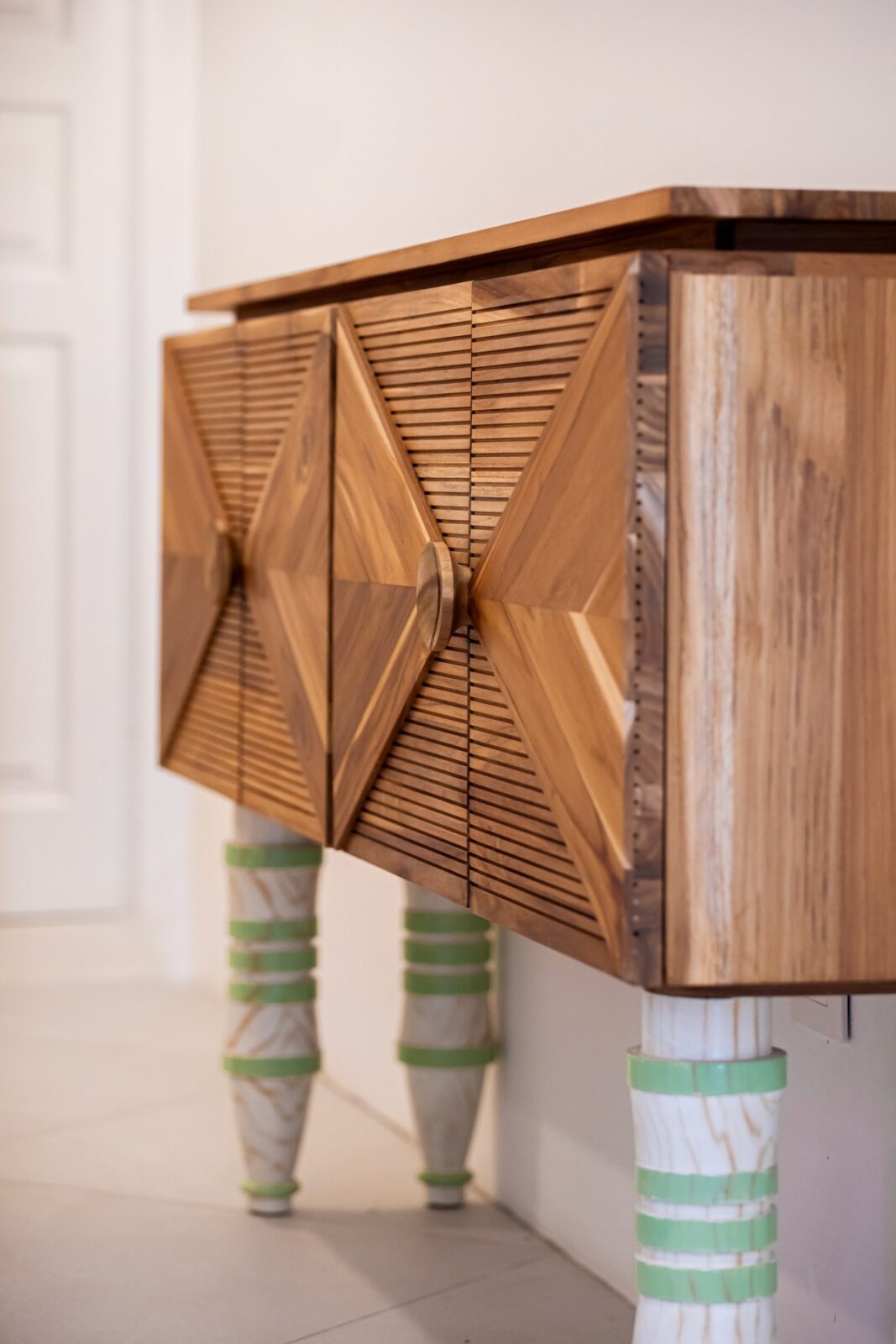
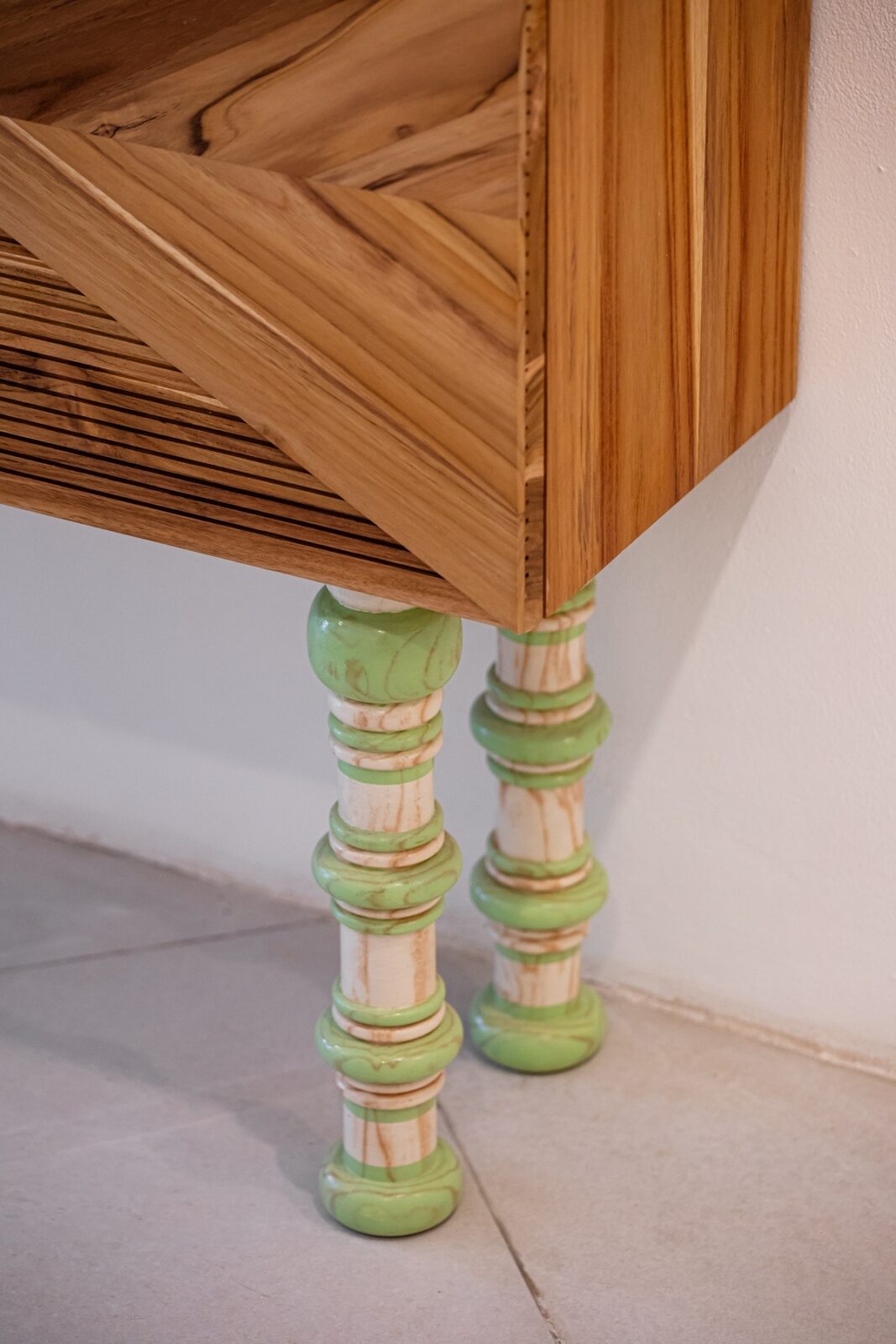
Maricruz Miranda Nautical Interiors’ Hexapods design
Nine years ago, the company Interiors received the honourable mention at the Laka Competition ‘16 – Architecture that Reacts for their Hexapods, a new vernacular architecture project. Drawing on Ethiopian nomadic architecture, the company created lightweight, customizable tents that can be easily dismantled, packed, and reassembled. This 2016 architecture Biennale Project merged traditional Ethiopian woodworking knowledge with modern technology to create a sleek and adjustable structure. The structure is assembled simply by twisting it upright and locking it in place with electro-permanent magnetic joints.
Photo Credit: Maricruz Miranda Nautical Interiors


